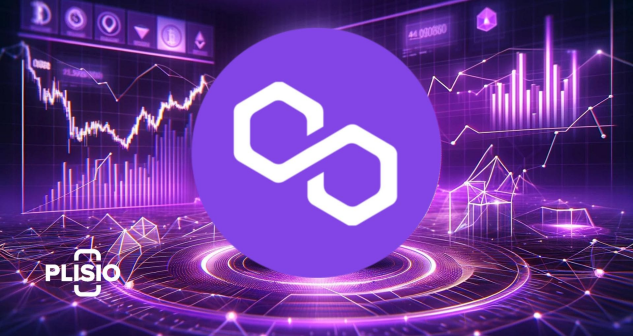
Cryptocurrency and blockchain technology have developed rapidly in recent years, attracting the attention of a large number of investors and developers. In particular, certain crypto-assets, such as the MATIC token, have become important players in the market. However, these tokens have also attracted the attention of regulators, especially the U.S. Securities and Exchange Commission (SEC). This article will delve into the background, development, and current status of MATIC tokens as cryptoasset securities.
What is MATIC Token?
MATIC is the native token on the Polygon chain. Polygon was originally called Matic Network and changed its name to Polygon in 2021. This blockchain platform was founded in 2017 in Mumbai, India by Jaynti Kanani, Sandeep Nailwal, and Anurag Arjun, among others. Since its inception, Polygon's founders have been actively involved in Polygon's work through Polygon Labs, the entity they created for "Polygon's development and growth."
Polygon functions and features
According to Polygon’s official website, Polygon is an Ethereum scaling platform. Through custody and Ethereum sidechains, developers can build user-friendly dApps (decentralized applications) with low transaction fees and scalability, and allow users to process transactions and initiate asset transfers on Polygon's sidechain network. technology development.
Polygon issued a fixed supply of 10 billion MATIC tokens. MATIC holders can earn additional MATIC by staking their MATIC on the Polygon platform and becoming a validator. This can be done by delegating their MATIC to other validators in exchange for a portion of the fees charged for validating transactions, or by staking their MATIC to other third parties, such as crypto asset platforms that provide staking services.
Investment properties of MATIC tokens
From MATIC’s initial white paper, “Matic Tokens are expected to provide economic incentives on the Matic Network [now Polygon]… Without Matic Tokens, there is no incentive for users to spend resources participating in activities or providing services to the entire ecosystem on the Matic Network. ” This indicates that the MATIC token has been issued and sold as an investment contract since its initial issuance and is therefore a security.
The prices of all MATIC tokens will rise or fall together. Since July 2021, MATIC has been available for trading through the brokerage services provided by MetaMask Swaps. Polygon's public messaging would lead investors, including those who have purchased MATIC since October 2020, to view MATIC as an investment. Specifically, MATIC holders would reasonably expect that through the efforts of the Polygon team, the Polygon protocol will grow and develop, and that this growth and development will in turn increase the demand for and value of MATIC tokens.
Fund raising and marketing
For example, Polygon publicly stated in its white paper that it will develop and grow its business through investment proceeds from its private and public fundraising activities. Additionally, following the IEO, Polygon conducted an additional MATIC sale, publicly stating that it was doing so to raise the funds needed to support the growth of its network. On February 7, 2022, Polygon reported on its blog that it had raised approximately $450 million for its native MATIC token through a private sale round to several well-known venture capital firms. “With this funding, the core team can ensure Polygon is at the forefront of driving mass adoption of Web3 applications, a race we believe will ultimately make Ethereum superior to other blockchains,” Polygon reported.
Polygon also reported funding raised from other high-profile and celebrity investors. Polygon also frequently advertises when crypto asset trading platforms will allow MATIC for trading.
Promotion on social media
Polygon also explicitly encourages MATIC buyers to consider MATIC as an investment in other ways. For example, in a tweet on February 5, 2021, 14 months after MATIC’s biggest price drop, Nailwal compared the coin to a boxer returning from defeat to become a champion:
Additionally, on November 3, 2022, Nailwal tweeted: “I will not rest until Polygon gets the ‘top three’ position it deserves (tied with BTC and ETH). No other project comes close to this Goal. Attitude, working around the clock to drive adoption, which is why we are currently the most popular scaling infrastructure platform.
By 2023, Polygon’s founders continued to promote the platform through various social media. For example, on February 21, 2023, Nailwal tweeted that Kanani retweeted "Polygon's growth is exponential. To maintain this amazing growth, we have clearly defined our strategy for the next 5 years by expanding Ethereum Forum drives mass adoption of web3.
Since January 2022, Polygon has also promoted that it will "burn" MATIC tokens accumulated as fees, indicating that the total supply of MATIC will decrease. For example, in January 2022, Polygon highlighted a protocol upgrade that made burning possible in a blog post titled “Burn, MATIC, Burn!”
in conclusion
As the native token on the Polygon chain, the MATIC token is issued and sold in a manner that makes it considered a security. Whether through initial issuance, secondary market trading or staking mechanisms, MATIC tokens have demonstrated significant investment attributes. The Polygon team actively promotes MATIC in a variety of ways, and has attracted the attention of a large number of investors through continuous technological innovation and market expansion.
In the future, with the further development of blockchain technology and the crypto-asset market, the status and influence of MATIC tokens in the market are expected to continue to increase. However, investors still need to fully understand the related risks and remain cautious when participating in such crypto-asset investments.